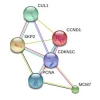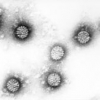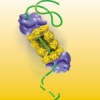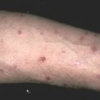Prevalenza e gravità del prurito nel linfoma cutaneo a cellule T
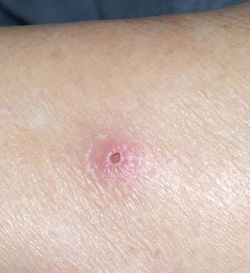 I tipi più comuni di linfoma cutaneo a cellule T (CTCL) sono la micosi fungoide (MF) e la sua variante leucemica, la sindrome di Sézary (SS). Una delle caratteristiche di MF e SS è prurito che raramente si risolve col trattamento. Poco si sa circa la prevalenza e la gravità del prurito in MF e SS.
I tipi più comuni di linfoma cutaneo a cellule T (CTCL) sono la micosi fungoide (MF) e la sua variante leucemica, la sindrome di Sézary (SS). Una delle caratteristiche di MF e SS è prurito che raramente si risolve col trattamento. Poco si sa circa la prevalenza e la gravità del prurito in MF e SS.
Obiettivi: È stata effettuata un'analisi retrospettiva per valutare la prevalenza e la gravità del prurito in MF e SS.
Metodi: Questo studio ha confrontato il prurito auto-riferito nello stadio precoce (stadio Ia-IIa) e nella fase avanzata (stadio IIb-IVb) della malattia, ma anche in MF e SS, dei pazienti che si sono presentati alla nostra clinica CTCL, tra il 1 gennaio 2006 e il 30 giugno 2010.
Risultati: Dei 551 pazienti eleggibili, 486 riferivano dei valori di prurito di base. Complessivamente, 373 pazienti presentavano la malattia in fase iniziale, 113 avevano la malattia in uno stadio avanzato, e 72 in SS. La prevalenza del prurito è stata del 66% in tutti i pazienti, del 62% nei pazienti con la malattia allo stadio iniziale, dell'83% in quelli con malattia in stadio avanzato, del 61% in quelli con MF, e del 94% in quelli con SS. Su una scala di 10, i valori medi di prurito sono stati: 4.2 [errore standard della media (SEM) = 0.18] in tutti i pazienti; 3.4 (SEM = 0.19) nei pazienti con la malattia allo stadio iniziale; 6.6 (SEM = 0.36) in quelli con la malattia allo stato avanzato; 3.6 (SEM = 0.18) nei pazienti con MF, e 7.7 (SEM = 0.37) nei pazienti con SS. Le differenze tra la malattia in fase precoce e quella in fase avanzata, e tra MF e SS, sono risultate statisticamente significative (P <0.001).
Conclusioni: Il prurito colpisce una grande percentuale di pazienti affetti da CTCL ed è significativamente più grave nella malattia in fase avanzata rispetto a quella in fase iniziale, e in SS rispetto a MF. Esistono poche informazioni sulla gamma completa dei sintomi: questo aspetto della cura del paziente richiede ulteriori approfondimenti.
Storia della pubblicazione:
Titolo: Prevalence and severity of pruritus in cutaneous T cell lymphoma
Rivista: International Journal of Dermatology. doi: 10.1111/j.1365-4632.2011.05188.x
Autori: Alok Vij, Madeleine Duvic
Affiliazioni: Department of Dermatology, Baylor College of Medicine, Houston, TX
Department of Dermatology, University of Texas MD Anderson Cancer Center, Houston, TX, USA
Abstract:
Background The most common types of cutaneous T cell lymphoma (CTCL) are mycosis fungoides (MF) and its leukemic variant, Sézary syndrome (SS). One of the hallmarks of MF and SS is pruritus that rarely responds to treatment. Little is known about the prevalence and severity of pruritus in MF and SS.
Objectives A retrospective analysis was performed to assess the prevalence and severity of pruritus in MF and SS.
Methods This study compared self-reported pruritus in early-stage (stage Ia–IIa) and late-stage (stage IIb–IVb) disease, and in MF and SS, in patients presenting at our CTCL clinic between January 1, 2006, and June 30, 2010.
Results Of the 551 eligible patients, 486 reported baseline pruritus values. Overall, 373 patients had early-stage disease, 113 had late-stage disease, and 72 had SS. The prevalence of pruritus was 66% in all patients, 62% in patients with early-stage disease, 83% in those with late-stage disease, 61% in those with MF, and 94% in those with SS. Mean pruritus values out of 10 were: 4.2 [standard error of the mean (SEM) = 0.18] in all patients; 3.4 (SEM = 0.19) in patients with early-stage disease; 6.6 (SEM = 0.36) in those with late-stage disease; 3.6 (SEM = 0.18) in MF patients, and 7.7 (SEM = 0.37) in SS patients. Differences between early- and late-stage disease, and MF and SS, were statistically significant (P < 0.001).
Conclusions Pruritus affects a large proportion of patients with CTCL and is significantly more severe in late- than in early-stage disease and in SS than in MF. Little information exists on the full range of the symptom burden on the patient. This aspect of patient care requires further exploration.
https://www.youtube.com/@djfdm

